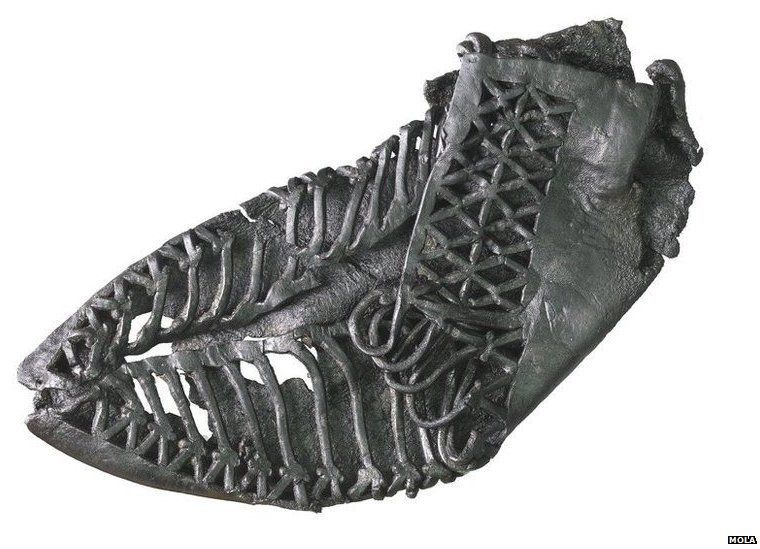In pictures: London's 'deepest' Roman excavation finds
- Published

Ten thousand small finds have been unearthed in a three-acre site in the City, dubbed the "Pompeii of the north". Finds include items such as this Roman carbatina shoe, made from a single piece of leather and dated between the late 1st Century and early 2nd Century AD. Pictures from MOLA (Museum of London Archaeology).
More than 3,500 tonnes of soil have been excavated by hand from the site on Queen Victoria Street, which will house the media corporation Bloomberg's European headquarters from 2016. The discoveries cover the entire period of Roman occupation of Britain, from the mid-40s AD, to the early 5th Century.
The site is providing fresh insight into the religious and mystical practices of London's early residents. Amber was an expensive imported material and was thought to have magical powers and this amulet, in the shape of a gladiator’s helmet, may have been used to protect children from illness.
The "lost" river of Walbrook, which once ran through London, flooded the site, and created a rare preservation area which was devoid of oxygen. Organic materials such as wood and leather were kept unblemished, including this section of Roman oak fencing, which survives to shoulder height.
The site has supplied the largest quantity of Roman leather ever to have been unearthed in London, including this upholstered leather object with stitched decoration, which shows a warrior fighting mythical creatures. It may have come from a piece of furniture or the interior of a chariot.
More than 100 fragments of wooden tablet have been preserved and they contain fascinating information about Roman life. This tablet is a letter to a friend. Tablets of this sort were used for everyday correspondence and even shopping lists or party invitations.
Many of the finds contain obscene imagery, such as a 1st century AD Roman pendant. It would have been used by cavalry and features a copper-alloy fist and phallus. It is believed to have had a pair of clappers to make a jingling sound as the horse moved.
These 4th Century pewter bowls and cups are examples of fine tableware and were thrown into a timber-lined well as part of a ritual offering, along with some cow skulls. Once experts have managed to record all the finds, they will form part of a public exhibition in the new building.
- Published9 April 2013
- Published11 April 2013
Related Internet Links
The BBC is not responsible for the content of external sites.